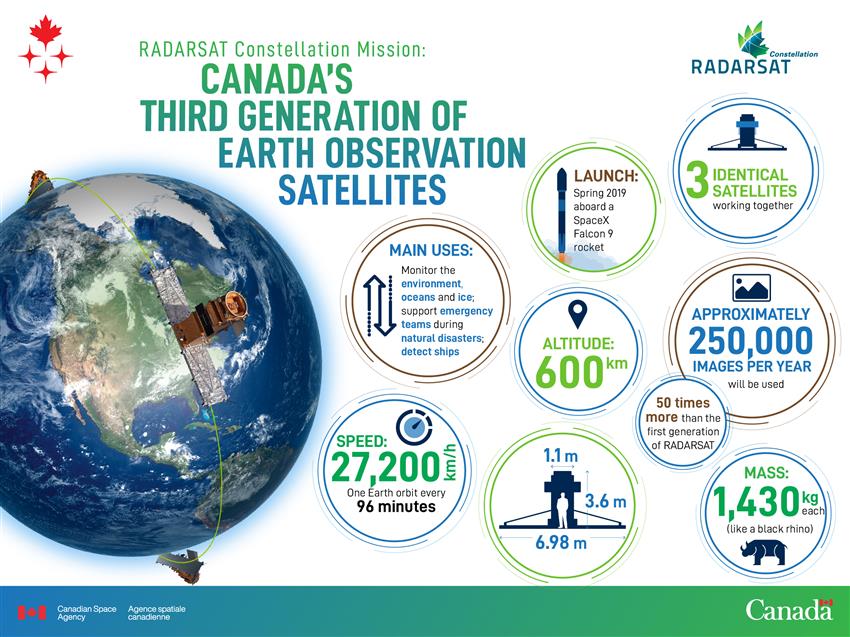Published on 13 June 2019
The RADARSAT Constellation Mission, Canada's new generation of Earth observation satellites, was successfully launched yesterday afternoon.
Three identical satellites working together
The evolution of the RADARSAT Program, the RCM includes a trio of Earth observation satellites, capable of scanning Earth day or night and in any weather conditions. The three-satellite configuration allows for daily revisits of Canada's vast territory and maritime approaches, as well as daily access to 90% of the world's surface and the Arctic up to four times a day.
With its capabilities distributed across several small satellites rather than a single large satellite, the RCM boasts a robust, flexible system that costs less to launch and operate.
The three satellites will be evenly spaced on the same orbital plane at an altitude of 600 km.

Launched by a used SpaceX rocket
The trio of RCM satellites were successfully launched yesterday afternoon (June 12th at 14:17 GMT) from Vandenberg Air Force Base, using a SpaceX Falcon 9 rocket. The three satellites were released in orbit about an hour after liftoff, and appear to be in perfect shape.
About 8 minutes after liftoff, the two-stage Falcon 9's first stage gently touched down in the center of LZ-4, SpaceX's landing pad at Vandenberg. This first stage was the same booster that ferried SpaceX's Crew Dragon capsule to the International Space Station (ISS) in March of this year. Following that flight, the booster had landed safely at sea, before getting hauled back to land.